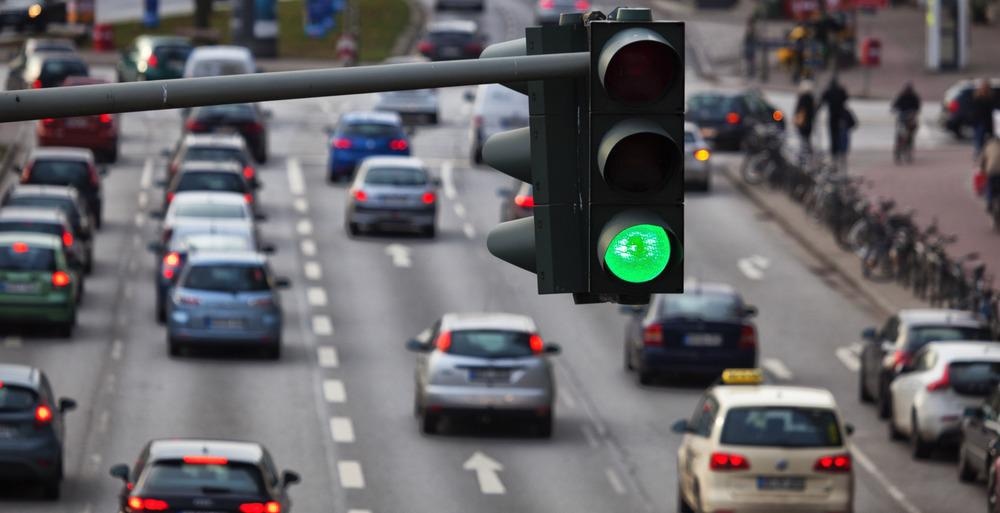Researchers in Spain recently presented a low-cost prototype for image capture and traffic sign identification in future autonomous vehicles. Traffic signals – particularly lights – are much more important for the development of autonomous transportation than is generally known.

Image Credit: Ralf Gosch/Shutterstock.com
Machine Learning and Camera Detection for Traffic Signs
The system uses a front-facing camera to capture images on and around the road, while artificial intelligence (AI) and smart systems automatically identify traffic signs.
The image data captured by the system can be combined with other parts of the autonomous vehicle’s AI to help it make safe driving decisions in a dynamic, real-life environment.
The prototype was developed by Computer Scientists at the University of Oviedo, Spain, and presented in a conference on “soft computing models in industrial and environmental applications” in 2021. The research was part-funded by the Spanish government’s Ministry of Science and Innovation.
The researchers used five deep learning classifiers to enable machine learning in their system, which resulted in the algorithm powering the identification AI. That product could achieve over 90% accuracy in detecting and classifying traffic signs from camera data.
Fitting the system to any vehicle was a priority for the research team, which ensured its prototype would be widely compatible. Its conference paper called for more research into computer vision, machine learning, AI, and other traffic sign detection systems for autonomous driving to reach its potential.
Traffic Lights and Autonomous Vehicles
Autonomous vehicles might make roads safer as human error is removed from the road safety equation, depending on how many human-driven vehicles and pedestrians are also using the road.
But safety is also a matter of perception. If people – especially pedestrians, who are most at risk from vehicles – do not feel confident that an autonomous technology such as self-driving cars is working safely, they will resist it.
Drivers in vehicles and pedestrians use non-verbal communication to safely interact with each other at some crossings, especially in places where pedestrian crossings are rare, poorly maintained, or just not adhered to by local drivers.
Autonomous driving systems lack this capability for non-verbal human-to-human communication. Some proposals have been put forward, including using lights and beeps, or automated voice instructions. But no solution has yet emerged as the main answer to communication between autonomous vehicles and pedestrians.
University of Michigan scientists have been working on this problem. They found that people’s trust of traffic signs – namely, traffic lights – outweighed their distrust of autonomous vehicles.
There are 300,000 traffic lights in the United States. Like other traffic signs, these do not really work in any meaningful mechanical sense: they do not physically stop people or traffic from disobeying the rules. Instead, they work through social consensus. Everybody agrees that you should stop at red lights and, by and large, everybody does.
This consensus-thinking still applies when pedestrians face autonomous vehicles. The presence of the traffic light and the clear signal telling them to stop or go makes pedestrians trust that vehicles that are also commanded by the light will also adhere to its commands as they do.
The researchers even found that aggressive autonomous driving – decelerating suddenly and quickly when approaching a red light – did not make pedestrians feel scared of the autonomous vehicle, as it did when they encountered autonomous driving on un-signaled roads.
The team proposed that autonomous vehicles should communicate directly with traffic signals in light of these findings. This would replace reliance on camera detection systems (even the research prototype discussed above only achieved around 90% accuracy) with a simple binary data source.
Autonomous vehicles could also use insights from a network of traffic lights – and other signals – to optimize route planning, especially in cities. This could have a cumulative effect as more vehicles follow optimized routes, reducing traffic congestion overall.
Future of Autonomous Vehicles
As the traffic lights example illustrates, the future of autonomous vehicles may rely on networked data aggregation and infrastructure integration. Communication with other vehicles will also contribute to the overall optimization of the whole traffic system, reducing energy costs and travel times at once.
However, deploying fully autonomous vehicles will always contain risks, especially as other vehicles, pedestrians, temporary construction, and other hazards continue to occupy the city at street level.
Freeing itself of these constraints, the future of autonomous vehicles may take flight to move people and goods around. Small, battery-powered, mobility and delivery flights are possible with current technology. It may only be limited manufacturing capacity and unanswered regulatory questions that stand in the way of this future.
References and Further Reading
Eliot, L.B. (2019) Traffic Lights and AI Autonomous Cars. AI Trends.
González, E.G., J.R. Villar, and E. de la Cal (2021) Low-Cost Deep Learning-Based Prototype for Automatic Identification of Traffic Signs in Vehicles. Advances in Intelligent Systems and Computing. Available: https://doi.org/10.1007/978-3-030-87869-6_9
Robert, L. (2020) Linking self-driving cars to traffic signals might help pedestrians give them the green light. The Conversation. Available at: https://theconversation.com/linking-self-driving-cars-to-traffic-signals-might-help-pedestrians-give-them-the-green-light-132952
Disclaimer: The views expressed here are those of the author expressed in their private capacity and do not necessarily represent the views of AZoM.com Limited T/A AZoNetwork the owner and operator of this website. This disclaimer forms part of the Terms and conditions of use of this website.